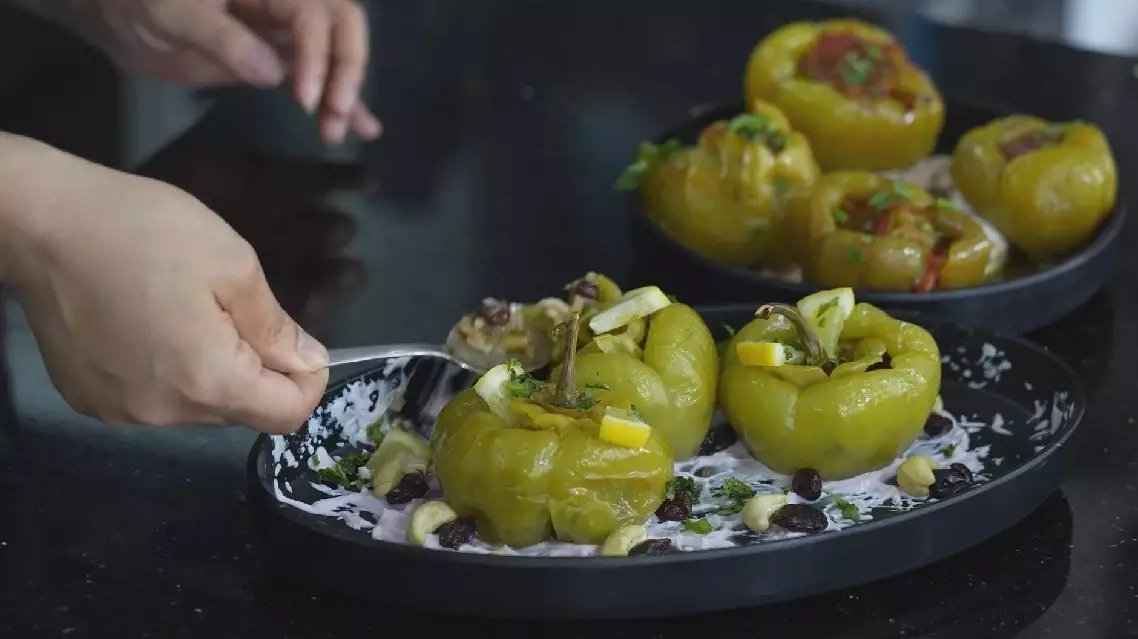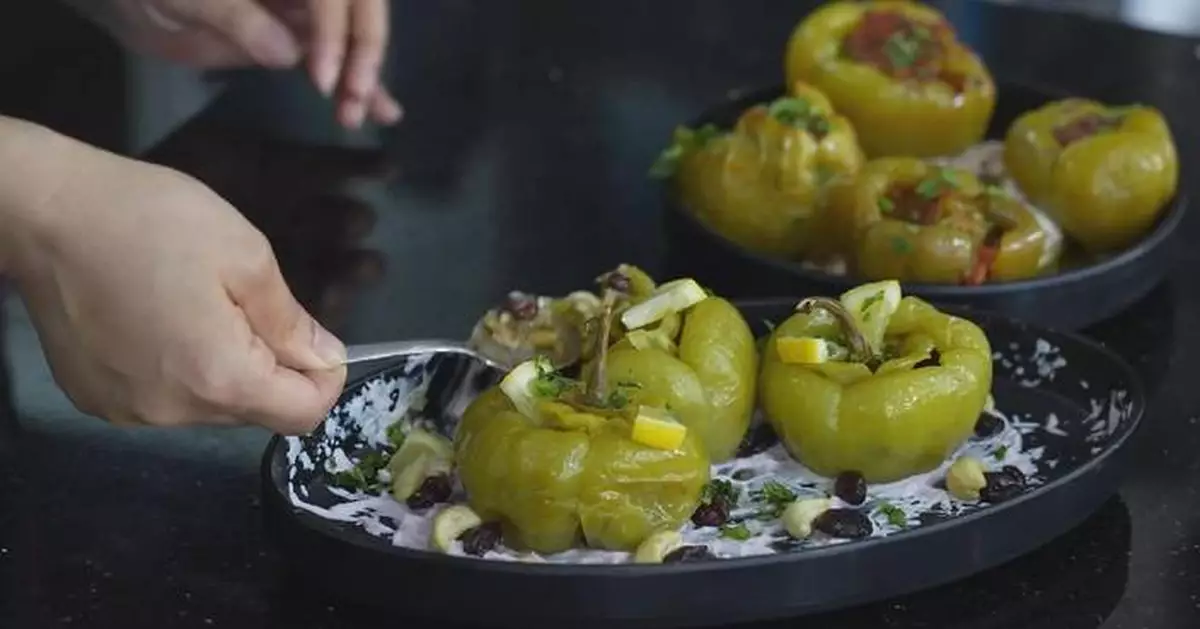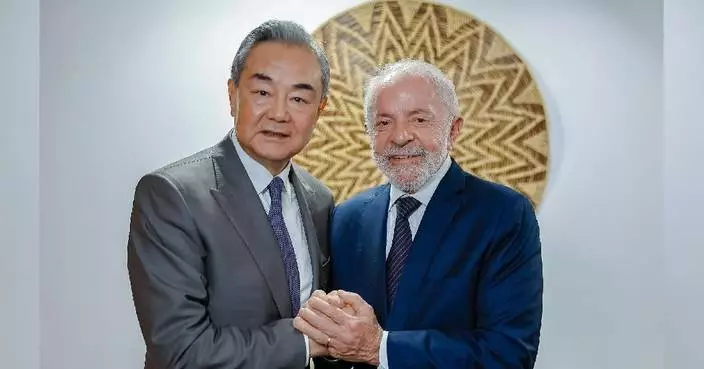Olive oil-based vegan dolma, a traditional Turkish food, has become a common dish so far this summer, as the country's inflation rate has risen to a record high since November 2022.
Dolma, meaning "stuffed" in Turkish, refers to various vegetables filled with a mixture, commonly rice, in Türkiye.
In different areas, the making of dolma varies. In western areas which are rich in olives, dolma is made of olive oil and vegetables while in the eastern areas, dolma is filled with meat.
As a traditional cold starter, vegan dolma has gained popularity in summer not because of its refreshing flavor, but also of high inflation.
In a restaurant in Istanbul, the price for two dolmas is 180 liras (about 5.58 U.S. dollars), doubled from the same period last year.
"We had to adjust the structure of ingredients, opting to use less meat in the filling. And for vegan dolmas, we would reduce the amount of nuts included. We have no idea. Under the pressure of high inflation, that's all we can do," said Elam, a chef.
Türkiye's annual inflation rate rose to 75.45 percent in May, the highest since November 2022, reaching the peak expected by the government and economists, according to official data released on Monday.
Consumer prices rose by 3.37 percent in May compared to an increase of 3.18 percent in April, as per data from the Turkish Statistical Institute. The highest monthly increase was recorded in the clothing and footwear category.
The country has implemented a series of aggressive rate hikes and fiscal measures since mid-2023 to temper inflation. However, years of loose monetary policy have weakened the lira, contributing to one of the world's highest inflation rates and a significant cost-of-living burden on most households in the import-dependent country.
Turkish Treasury and Finance Minister Mehmet Simsek said that Türkiye would be entering the disinflation process in June, noting that "annual inflation will likely fall below 50 percent by the end of the third quarter."
During the disinflation process, annual inflation is expected to go down to 33.2 percent after 12 months and 21.3 percent after 24 months, the minister said, noting that the expectations will converge closer to the government's targets in the period ahead.

Vegan dolma gains popularity as food inflation spikes in Türkiye
U.S. tariffs on Cambodia, which were set at 49 percent, have sparked concerns among the Southeast Asian country's key export industries such as garment manufacturing amid the ensuing economic uncertainties.
On April 2, U.S. President Donald Trump announced the 49 percent "reciprocal tariff" on goods imported from Cambodia, the highest among all countries. Days later, the U.S. reduced the so-called "reciprocal tariff" to 10 percent for 90 days, offering a window period to Cambodia for negotiations with it.
Cambodian businesspeople say the tariffs have the potential to wreak havoc on the country's manufacturing sector, which, according to data from the World Bank, makes up around a fifth of the country's GDP.
"For U.S. manufacturers, definitely, there will be a big impact. If manufacturers are focusing on U.S. products, they are now in the middle. They don't know what they should do at the moment because the tariff now from Cambodia to the U.S. is actually quite high," said Dr. Ben Li, a Hong Kong investor in Cambodia and Chairman of the Cambodia Chinese Commerce Association.
Nevertheless, Li sees the tariff hike as an opportunity to export more Cambodian goods to the European Union, where a majority of Cambodian exports enjoy duty-free status.
"I always say there will be a light (at the end of the tunnel.) Even now, the U.S. tariff is so high, it's going to be so high after 90 days, we don't know. But, there's still a big market to Japan or to the European Union. There's still a big opportunity there," he said.
The Cambodian investor also believes the development of major infrastructure projects will help support Cambodia's economy.
"Especially the new canal and then the new airport, and the railways which connect to China. I believe once the logistics and infrastructure are built up, it can help the whole country's economy. By reducing the transportation costs, it can also mitigate the tariff costs," he said.
Cambodia and the U.S. held their first tariff negotiations on April 16, with more expected to follow. Local experts said the stakes are high for the country's workers.
"If this negotiation fails, there will be a significant impact. It will include the garment and travel goods sector. These sectors consist of about 1,068 factories and 930,000 workers. The income generated from these sectors is about 3 billion dollars per year. So it would significantly impact Cambodia's economy, jobs and incomes," said Chey Tech, a socio-economic research and development consultant from Dynamic Alliance Consulting.
Despite the potential risks, Tech expressed his optimism about a positive outcome, citing Cambodian Prime Minister Hun Manat's letter to Trump on April 4.
"The Prime Minister's letter confirmed that Cambodia would reduce the tariff rate for U.S. goods to 5 percent. Second, Cambodia is the least developed country. Third, Cambodia produces goods that the developed countries won't produce. We asked whether the U.S. would be able to produce these low-cost products. It cannot," said Tech.
In 2024, Cambodia exported goods of 9.9 billion dollars to the U.S., making it the country's largest market, accounting for 37 percent of Cambodia's total exports.

49-percent US tariffs sparks worry among Cambodia's key export industries




















































